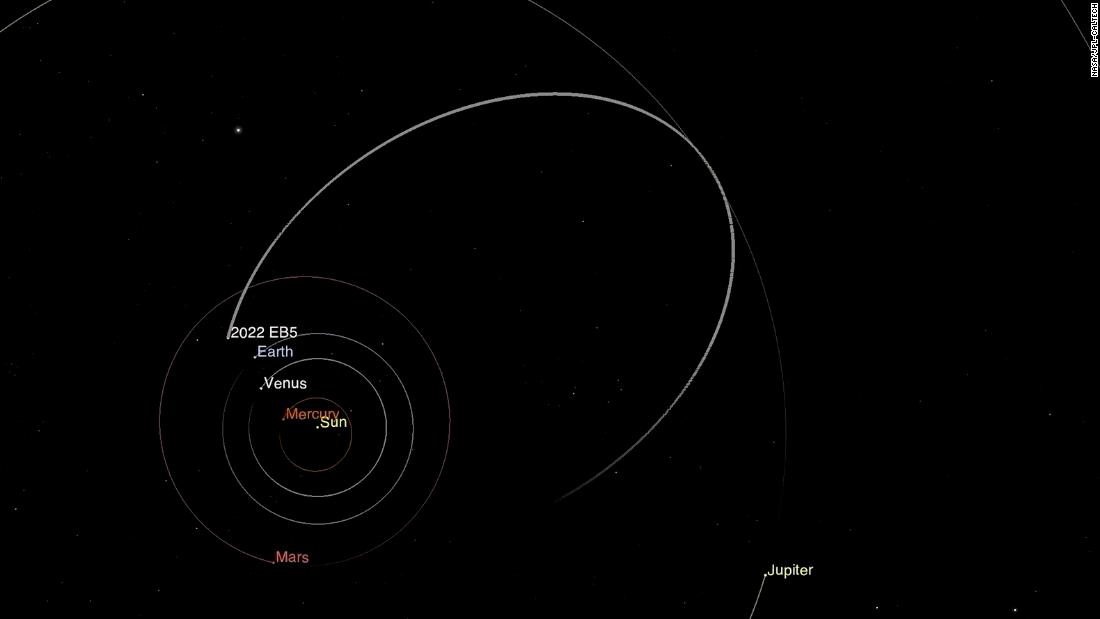(CNN) – The initial warning system to detect asteroids threatening the Earth was operated by NASA and its collaborators around the world.
On Friday, March 11, just hours before it collided with the atmosphere over the Norwegian Sea, it successfully detected a small asteroid 2 meters wide before it crashed. According to a report From NASA’s Jet Propulsion Laboratory released on Tuesday. NASA says it is too small to endanger Earth.
Still animated showing the planned orbit of the asteroid 2022 EB5 orbiting the Sun before colliding with Earth’s atmosphere on March 11.
These tiny asteroids often slip through the surveillance network, and by 2022 EB5 – named after the asteroid – was only the fifth of its kind to be detected and tracked before impact. (Do not be afraid, a large asteroid will be detected far away from Earth, many years before the potential catastrophic impact.)
“There are a lot of small asteroids like 2022 EB5, and they often make an impact in the atmosphere every 10 months,” said Paul Sodas, director of JPL’s Center for Material Research near Earth (CNEOS). With our planet.
“But very few of these asteroids were actually detected in space and were widely seen before impact, because they were so dim until the last few hours that a survey telescope had to look at the right place in the sky at the right time. They could find one.
The asteroid was spotted at the Piszkéstető laboratory in northern Hungary two hours before it struck astronomer Krisztian Sarneczky, who hoisted it on NASA’s object confirmation page near the Earth at the Minor Planet Center, NASA said.
NASA’s “Scout” attack risk assessment system automatically searches for possible new asteroids or other space objects in the Minor Planet Center database, taking these first measurements to calculate the path of 2022 EB5.
As soon as the computer determined that 2022 EB5 was going to hit the Earth’s atmosphere, NASA flagged the object on the Scout webpage to inform the observatory community near Earth, which was able to provide more observations.
“The scout made 14 observations over 40 minutes from a laboratory. He was able to work when he first identified the object as an impact. Initially we were able to determine the locations of vulnerability from western Greenland to the Norwegian coast,” he said. David Fernandez is a navigation engineer at JBL, the company that created the scouts. “As more and more laboratories observe the asteroid, our calculations about its orbit and the location of its impact have become more accurate.”
“This is a real-world event,” NASA said, adding that “attack prediction models in CNEOS are capable of predicting the potential impact response of a large object.”
Asteroids and other objects close to Earth pass through our planet several times a week. In September, NASA deliberately crashes a spacecraft Experimental technology developed to divert the impact of an asteroid, as opposed to changing its orbit in asteroid space.
Known as Dart workOr the double asteroid orbit test, the spacecraft Timorbos, a small moon orbiting the asteroid Ditimos near Earth.
The closest objects to Earth are asteroids and comets, which place them within 30 million miles of Earth.





